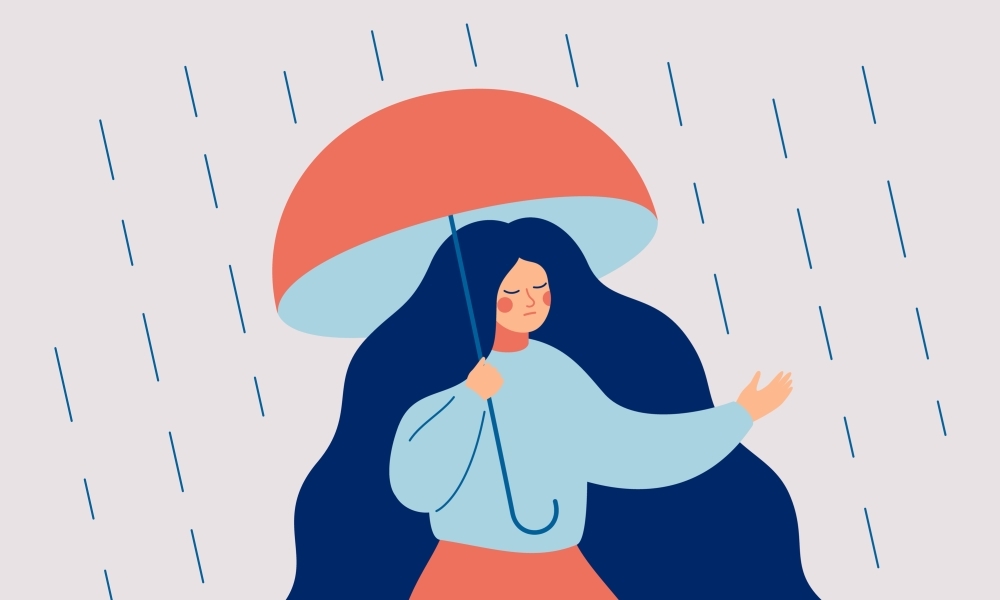Anxiety is the most common mental health condition in Australia. Feeling anxious is one way our bodies keep us safe from danger – it is an emotion that we feel when we’re under pressure or threat.
Wellbeing by Teacher is dedicated to improving the lives of teachers and school leaders by providing them with informative, evidence-based strategies on how to care for their body, mind and overall sense of wellbeing. In today’s article Dr Jill Newby from the Black Dog Institute and UNSW discusses how to recognise physical signs and symptoms of anxiety and where to get the support you need to manage it.
Anxiety is the most common mental health condition in Australia. According to Beyond Blue, one in four people will experience anxiety at some stage in their life. Feeling anxious is one way our bodies keep us safe from danger – it is an emotion that we feel when we’re under pressure or threat.
The feeling of anxiety is different to an anxiety disorder. An anxiety disorder is when people experience persistent anxieties that interfere with their lives. It can become so troublesome that it interferes with their work, their relationships, their social lives and daily activities.
Associate Professor Jill Newby is a MRFF Career Development Fellow at UNSW and a Clinical Psychologist at the Black Dog Institute. She says there are different types of anxiety disorders people experience, including phobias, panic disorders and social anxiety. There are also conditions like obsessive-compulsive disorder (OCD) and post-traumatic stress disorder (PTSD), which have anxiety at the heart of them, too.
‘There’s other types of anxiety as well – there’s one called generalised anxiety disorder, where people worry excessively. They often worry about a lot of different things like their work, their relationships, finances, the world … and those worries are so severe that they are uncontrollable,’ Newby tells Wellbeing by Teacher.
‘They wake people up at night, they find it difficult to control the worries and they experience other symptoms like insomnia, difficulty concentrating, difficulty making decisions, and it can even induce physical symptoms as well like pain and fatigue.’
Anxiety is the most common mental health condition in Australia. On average, one in four people – one in three women and one in five men – will experience anxiety at some stage in their life.
Recognising the physical symptoms of anxiety
It is important that people are able to recognise the signs and symptoms of anxiety, in order to manage the impact it has on their daily life. Newby says some of the common signs of anxiety include a racing heart, increased breathing, feeling shaky or blushing in the face.
‘Other people might have difficulty concentrating on the present moment because they’re so caught up on their worries, so they’re really focusing on worst case scenarios in their mind and not being able to control those thoughts and having difficulty with that mental spinning of thoughts,’ she says.
According to Newby, for some people anxiety will be temporary and it will go away after a few days or weeks. For others, it can be quite debilitating. ‘It can get so severe where it’s incredibly crippling and people can’t work or can’t get out of the house.’
For an observer or close friend of somebody experiencing anxiety, it can be difficult to recognise the signs, as they’re often different for different people. Newby says some of the obvious signs include doing things compulsively, like cleaning or ordering things. In others, it can be much more subtle.
‘It might be more avoidance – so you might notice it because they cancel invitations, they might organise plans with you and then cancel them at the last minute because they’re feeling too nervous about it.’
The impact of COVID-19 on anxiety
In March and April 2020, Newby and her colleagues surveyed 5070 adults in Australia on how they were feeling about the impact of COVID-19 on their mental health.
‘I wanted to look at, what was the impact on the mental health of Australians living here and could we look at who might be the most vulnerable to experiencing poorer mental health as a result of this pandemic?’ Newby says.
The research team share findings from the study in Acute mental health responses during the COVID-19 pandemic in Australia. They found 78 per cent of respondents reported that their mental health had worsened since the outbreak. One quarter (26 per cent) were very or extremely worried about contracting COVID-19, and half (53 per cent) were worried about family and friends contracting the virus. One in four reported elevated health anxiety in the previous week.
The study found some people or groups were particularly vulnerable to experiencing symptoms of depression and anxiety. These included women, younger adults (18-25 year olds) carers of children or older adults, Aboriginal and Torres Strait Islanders, and people who had a non-binary gender identity.
Getting the support you need to manage anxiety
Newby says that anxiety is a part of life and it’s worth developing skills to know how to address it, notice it and overcome it. She acknowledges this is going to look very different for different people.
‘For some people it is going to be way too hard and they’re going to need professional support from an anxiety specialist like a psychologist or a psychiatrist who specialises in anxiety. For other people it can really be managed,’ she says.
‘So the first thing that people can do is just keep track of their anxiety. When does it happen? When is it worse? When is it better? What are the things or situations or action that they’re doing when it is feeling worse? And what sorts of things or actions or situations make it better? And just by learning that, they can start to look at what things help and what things don’t help.’
Newby recommends two key places to access resources about anxiety – Black Dog Institute and Beyond Blue. It’s important to note that if your anxiety is persisting, the best person to see is your GP, who will be able to recommend anxiety specialists in your local area.
‘Out of all the mental health problems, anxiety is probably the biggest good news story in that it’s treatable. So if you have anxiety, there are skills and tools and treatments that are very effective to help you overcome it,’ she says.
If you or anyone you know needs help, call Lifeline on 13 11 14 or the Kids Helpline on 1800 551 800.
References
Beyond Blue. The facts: Anxiety. https://www.beyondblue.org.au/the-facts/anxiety
Black Dog Institute. Resources and support: anxiety. https://www.blackdoginstitute.org.au/resources-support/anxiety/
Newby, J., O'Moore, K., Tang, S., Christensen, H., & Faasse, K. (2020). Acute mental health responses during the COVID-19 pandemic in Australia. medRxiv.
How do you care for your own health and wellbeing? Do you have any tips that you’d share with your colleagues in education? We’d love to hear about it. Email us with a brief outline and we’ll be in touch.


